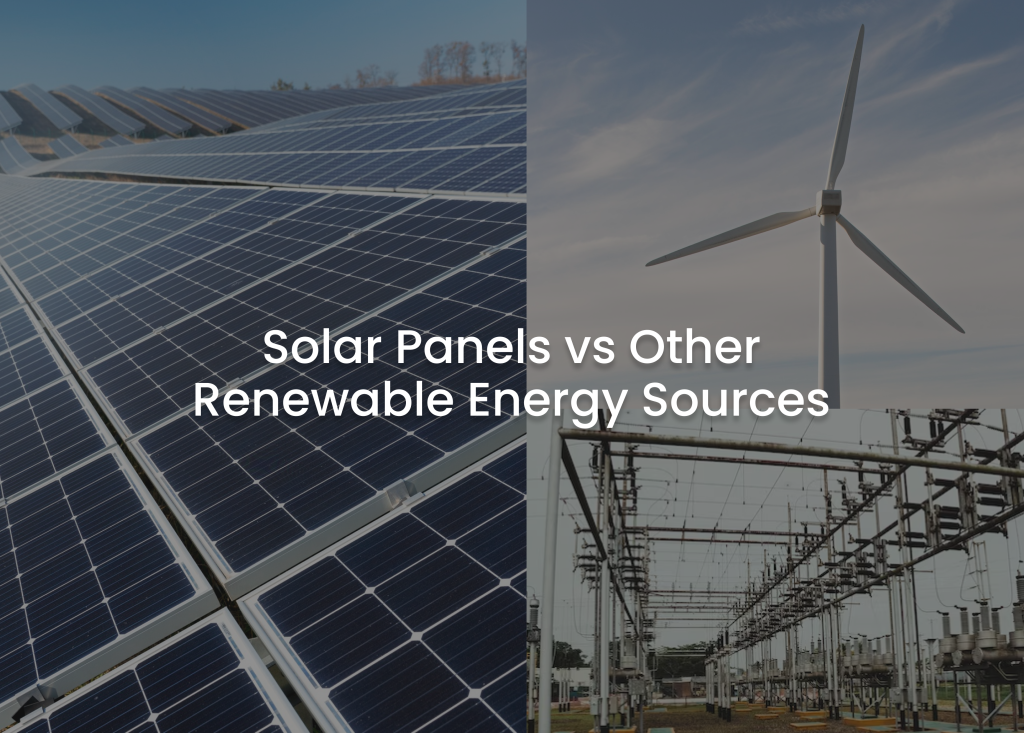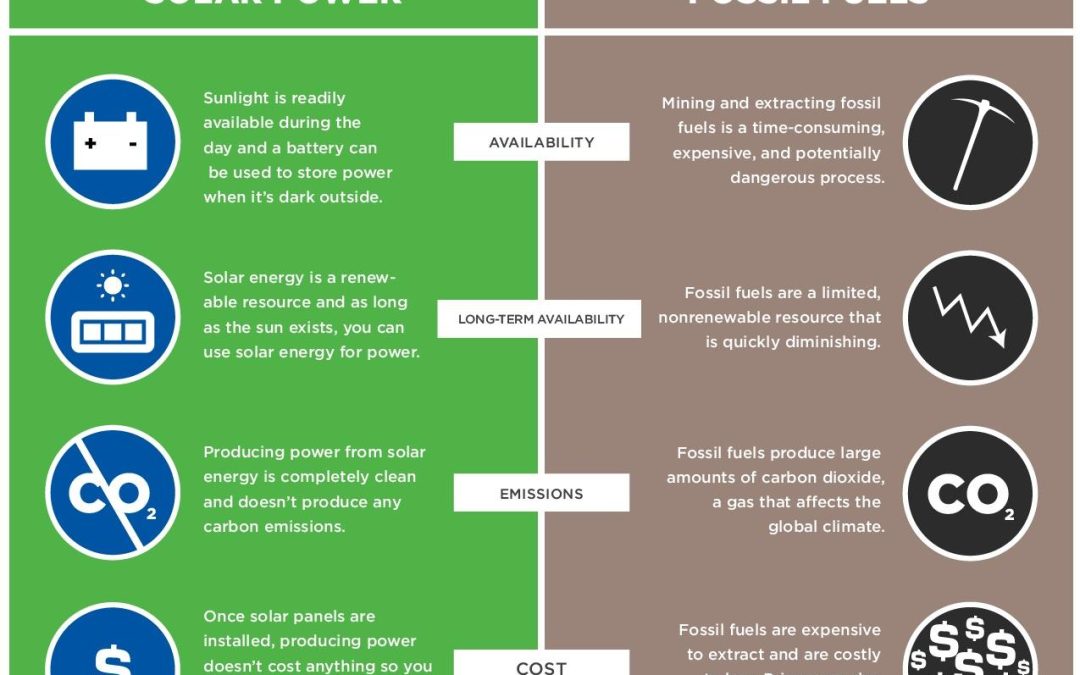So, you’ve been hearing a lot about renewable energy lately, and you’re curious about how solar panels stack up against the other options out there. Well, let me tell you, solar panels have been making waves in the energy industry for quite some time now. They offer a clean and sustainable source of electricity that can be generated right on your rooftop. But is solar power really the best choice? In this article, we’ll break down everything you need to know about solar panels and compare them to other renewable energy sources, so you can make an informed decision for yourself.
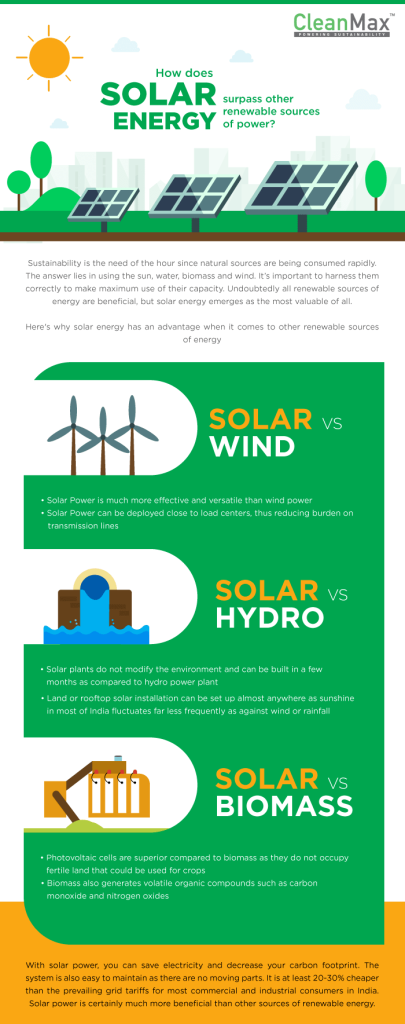
Solar Panels as a Renewable Energy Source
Solar panels are devices that convert sunlight into electricity, making them a reliable and environmentally-friendly source of renewable energy. These panels are made up of numerous solar cells that utilize the photovoltaic effect to generate electricity. When sunlight hits the solar cells, it excites the electrons, creating an electric current. This clean and sustainable energy alternative offers numerous benefits and is becoming increasingly popular around the world.
Benefits of Solar Panels
Solar panels offer several advantages that make them a viable choice for renewable energy generation. One of the key benefits of solar panels is their ability to reduce carbon emissions. Unlike traditional sources of electricity that rely on fossil fuels, solar panels produce electricity without emitting greenhouse gases, helping to combat climate change. By utilizing solar energy, you can significantly reduce your carbon footprint.
Another advantage of solar panels is their long-term cost-effectiveness. While the initial installation costs may be high, the operational costs of solar panels are relatively low. Once installed, solar panels require minimal maintenance, resulting in significant savings in the long run. Additionally, some countries offer incentives and tax credits for installing solar panels, further reducing the overall cost.
Solar panels also provide energy independence. With solar panels installed on your property, you become less reliant on the traditional power grid. This can provide peace of mind during power outages or disruptions in the grid. Moreover, excess electricity generated by solar panels can be sold back to the grid, allowing you to earn credits or even make a profit.
Comparison with Wind Energy
Definition and Function of Wind Energy
Wind energy harnesses the power of wind to generate electricity. Wind turbines, consisting of large blades connected to a rotor, are strategically placed in areas with high wind speeds. As the wind blows, it causes the blades to rotate, which subsequently powers a generator to produce electricity.
Advantages of Wind Energy
Wind energy has its own set of advantages. Firstly, wind energy is a virtually limitless resource. As long as the wind is blowing, wind turbines can continue generating electricity. This makes wind energy a more consistent and reliable source compared to solar energy, which relies on sunlight availability. Wind energy can also be generated offshore, where wind speeds are often higher, further increasing its potential.
Another benefit of wind energy is its scalability. Wind farms can range from small-scale operations to large, utility-scale installations. This flexibility allows wind energy to meet different energy demands, whether it be for individual households or entire communities. Additionally, wind energy can contribute to job creation and economic growth by supporting the manufacturing, installation, and maintenance of wind turbines.
Disadvantages of Wind Energy
Despite its advantages, wind energy also has its drawbacks. One of the main concerns is the visual and noise impact of wind turbines. Some people find wind turbines unsightly, especially when they are located near residential areas or scenic landscapes. Noise generated by the spinning blades can also be a nuisance for those living in close proximity to wind farms.
Another limitation of wind energy is intermittency. Wind speeds are not constant, and electricity generation from wind turbines fluctuates accordingly. This makes it necessary to have backup power sources or energy storage systems to ensure a consistent supply of electricity during periods of low wind. Additionally, the construction and maintenance of wind turbines can have an environmental impact, particularly on bird populations and migratory paths.
Differences in Availability and Location
Solar and wind energy differ in terms of availability and location requirements. Solar energy is available everywhere, as long as there is sunlight, making it a viable option for both urban and rural areas. In contrast, wind energy requires specific wind conditions to be effective. Wind turbines are typically installed in areas with consistent wind patterns and high wind speeds, such as coastal areas or open plains. This can limit the feasibility of wind energy installation in certain regions.
Comparison of Efficiency and Energy Production
In terms of efficiency and energy production, both solar and wind energy have their strengths. Solar panels have a high energy conversion efficiency, with some models achieving efficiency rates of over 20%. However, the actual energy production of solar panels depends on factors such as panel orientation, tilt angle, and shading. On the other hand, wind turbines can convert a larger percentage of wind energy into electricity, with modern turbines reaching efficiency rates of up to 50%. Wind energy production is also more predictable, as wind patterns can be monitored and analyzed to optimize the placement of turbines.
Comparison with Hydroelectric Power
Definition and Function of Hydroelectric Power
Hydroelectric power harnesses the energy of moving water to generate electricity. Dams or reservoirs are used to store water, and when released, the force of the flowing water turns turbines, which, in turn, power generators to produce electricity.
Advantages of Hydroelectric Power
Hydroelectric power offers several advantages as a renewable energy source. Firstly, it is a highly efficient method of electricity generation. Hydroelectric power plants can achieve efficiency rates of up to 90%, making them one of the most efficient forms of renewable energy. Large-scale hydroelectric dams can generate vast amounts of electricity, supplying power to entire regions or countries.
Another advantage of hydroelectric power is its reliability. Unlike solar and wind energy, which are dependent on weather conditions, hydroelectric power plants can provide consistent and predictable electricity generation. This makes them suitable for baseload power, meeting the minimum energy requirements of a region.
Disadvantages of Hydroelectric Power
Despite its advantages, hydroelectric power also has some drawbacks. One of the main concerns is the environmental impact of large-scale hydroelectric dams. The construction of dams can lead to the displacement of local communities and the loss of biodiversity due to flooding of natural habitats. The alteration of river ecosystems can also disrupt fish migration patterns and affect aquatic ecosystems downstream.
Moreover, hydroelectric power is limited by location availability. Suitable sites for hydroelectric dams are often limited to areas with significant water resources, such as rivers or reservoirs. This restricts the widespread adoption of hydroelectric power, particularly in arid regions or areas without suitable water sources.
Differences in Environmental Impact
When comparing solar panels with hydroelectric power, the environmental impact differs significantly. Solar panels have a minimal environmental footprint, as they do not require large-scale infrastructure or alterations to natural landscapes. The production of solar panels can cause some pollution during the manufacturing process, but the overall impact is relatively low. On the other hand, the construction and operation of hydroelectric dams can have significant environmental consequences, including habitat destruction, alteration of river ecosystems, and greenhouse gas emissions from decaying organic matter in reservoirs.
Comparison of Efficiency and Energy Production
In terms of efficiency and energy production, hydroelectric power has the advantage. Large-scale hydroelectric dams can achieve high efficiency rates and produce a substantial amount of electricity continuously. However, this efficiency comes at the cost of limited availability. In contrast, solar panels have lower efficiency rates but are available in a more widespread manner. With advancements in solar panel technology, efficiency rates are continually improving, making solar energy a more attractive option in terms of energy production.
Comparison with Biomass Energy
Definition and Function of Biomass Energy
Biomass energy utilizes organic materials, such as wood, crops, or agricultural waste, to produce heat and generate electricity. These organic materials are burned or converted into biogas through processes such as anaerobic digestion. The heat or biogas produced can then be used for various applications, including electricity generation and heating.
Advantages of Biomass Energy
Biomass energy has several advantages as a renewable energy source. Firstly, it utilizes organic waste materials that would otherwise end up in landfills or contribute to environmental pollution. By converting this waste into energy, biomass systems can help reduce greenhouse gas emissions and minimize the reliance on fossil fuels.
Another benefit of biomass energy is its versatility. Biomass can be sourced from various organic materials, such as agricultural residues, forestry waste, or dedicated energy crops. This flexibility allows biomass systems to be adapted to local resources and energy demands, making it a suitable option for both small-scale and large-scale applications.
Disadvantages of Biomass Energy
Despite its advantages, biomass energy is not without its limitations. One concern is the potential competition for resources and land use. The large-scale cultivation of energy crops for biomass production can lead to conflicts with food production or contribute to deforestation. Careful planning and sustainable practices are necessary to ensure that biomass energy does not have a negative impact on ecosystems or food security.
Moreover, biomass energy systems can generate air pollutants, such as particulate matter and nitrogen oxides, during combustion. These pollutants can have adverse effects on air quality and human health if not properly managed. The selection of appropriate biomass feedstocks and the implementation of efficient combustion technologies are crucial in minimizing these emissions.
Differences in Resource Availability
Solar panels and biomass energy differ significantly in terms of resource availability. Solar energy is available in varying degrees everywhere, as long as there is sunlight, making it a widespread and accessible source of renewable energy. In contrast, biomass energy relies on specific organic materials, which may not be readily available in all areas. The availability of biomass feedstocks depends on factors such as regional agricultural practices, forestry activities, and waste management systems.
Comparison of Efficiency and Energy Production
Solar panels have a higher efficiency rate compared to biomass energy systems. While solar panels can convert sunlight into electricity with efficiency rates of over 20%, biomass energy systems typically have efficiency rates of around 25-35%. This difference in efficiency is due to the energy losses associated with biomass conversion processes, such as combustion or anaerobic digestion.
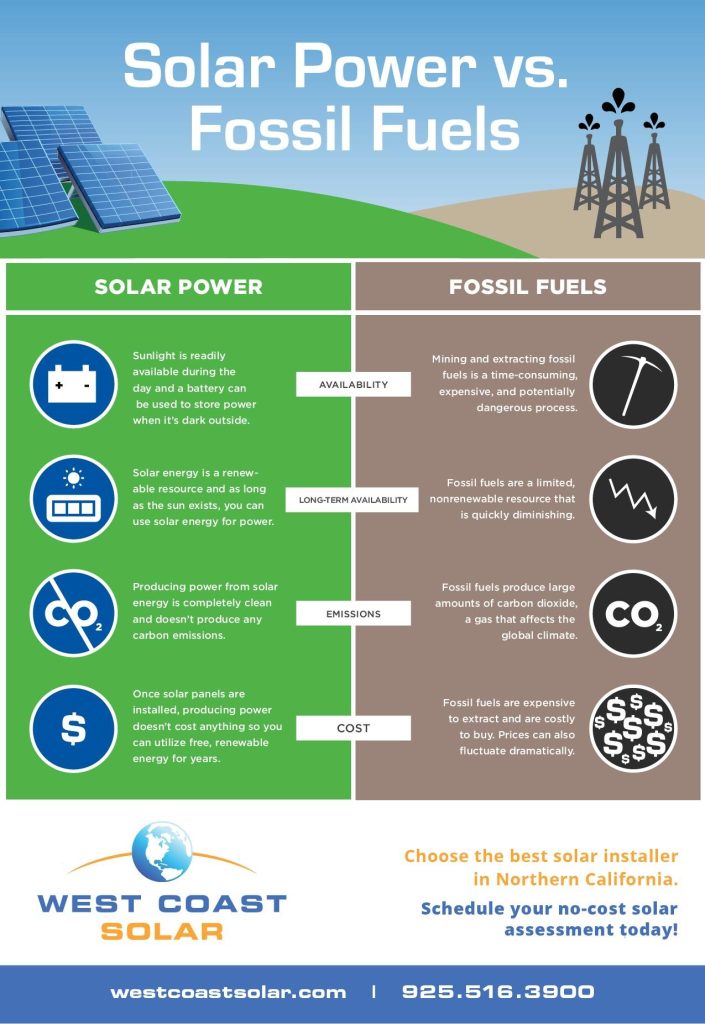
Comparison with Geothermal Energy
Definition and Function of Geothermal Energy
Geothermal energy harnesses the heat from within the Earth to generate electricity or provide heating and cooling. This renewable energy source utilizes the natural heat stored in rocks and fluids beneath the Earth’s surface. Geothermal energy can be extracted using various technologies, such as geothermal power plants or ground-source heat pumps.
Advantages of Geothermal Energy
Geothermal energy offers several advantages as a renewable energy source. Firstly, it is a constant and reliable source of energy. Unlike solar and wind energy, which are weather-dependent, geothermal energy is available 24/7, providing a consistent power supply. This makes it suitable for baseload electricity generation, especially in regions with high geothermal resources.
Another advantage of geothermal energy is its small environmental footprint. Geothermal power plants emit minimal greenhouse gases and pollutants compared to fossil fuel-based power plants. The extraction process for geothermal energy typically involves drilling wells and capturing steam or hot water, resulting in minimal land disruption and habitat destruction.
Disadvantages of Geothermal Energy
Despite its advantages, geothermal energy has its limitations. Geothermal resources are not equally distributed globally, with only certain regions having significant geothermal potential. This restricts the widespread adoption of geothermal energy, particularly in areas without suitable geothermal resources.
Another concern with geothermal energy is the potential for resource depletion. Over time, excessive extraction of geothermal fluids can lead to a decline in temperature and a reduced energy output. Careful monitoring and sustainable practices are necessary to ensure the long-term viability of geothermal energy.
Differences in Resource Availability
Solar panels can be installed almost anywhere, as long as there is sunlight. In contrast, geothermal energy is limited to specific regions with high geothermal resources. These regions are often characterized by tectonic activity, such as volcanic areas or geologically active zones. The availability of geothermal energy depends on the proximity to these geologically favorable regions.
Comparison of Efficiency and Energy Production
Geothermal power plants typically have higher energy conversion efficiencies compared to solar panels. Geothermal power plants can achieve efficiency rates of around 10-23%, depending on the technology used. On the other hand, solar panels have higher efficiency rates, with some models reaching over 20%. However, geothermal energy is available continuously, while solar energy production is subject to variations in sunlight availability. This makes geothermal energy a more reliable and consistent source of electricity.
Comparison with Tidal and Wave Energy
Definition and Function of Tidal and Wave Energy
Tidal and wave energy utilize the energy generated by tidal currents and ocean waves to generate electricity. Tidal energy is harnessed through underwater turbines that are placed in areas with strong tidal flows. As the tides change, the movement of water spins the turbines, generating electricity. Wave energy, on the other hand, uses the motion of ocean waves to drive mechanical systems that generate electricity.
Advantages of Tidal and Wave Energy
Tidal and wave energy offer several advantages as renewable energy sources. Firstly, tidal and wave energy are highly predictable compared to solar and wind energy. The regular patterns of tidal currents and consistent wave motion make these energy sources reliable and suitable for baseload power generation.
Another advantage of tidal and wave energy is their high energy density. The power density of tidal currents and ocean waves is significantly higher compared to wind and solar energy. This means that smaller-scale tidal and wave energy systems can generate a substantial amount of electricity, making them suitable for coastal communities or isolated areas.
Disadvantages of Tidal and Wave Energy
Despite their advantages, tidal and wave energy face challenges in terms of feasibility and environmental impact. Firstly, the installation and maintenance of tidal and wave energy systems can be complex and costly. These systems require specialized infrastructure and strong foundations to withstand the harsh marine environment. This can result in higher installation and operational costs compared to other renewable energy sources.
Tidal and wave energy systems can also have significant environmental impact. Large-scale deployment of underwater turbines or wave energy converters can disrupt marine ecosystems and affect fish populations. These energy systems must be carefully located and designed to mitigate their impact on underwater habitats and marine life.
Differences in Environmental Impact
Solar panels have minimal environmental impact, as they do not require large-scale infrastructure or alterations to natural landscapes. The production of solar panels can cause some pollution during the manufacturing process, but the overall impact is relatively low. In contrast, tidal and wave energy systems can have a notable impact on marine ecosystems and fish migration patterns. The construction and deployment of underwater turbines or wave energy converters can disrupt the natural flow of water and affect marine life in the vicinity.
Comparison of Efficiency and Energy Production
In terms of efficiency, tidal and wave energy systems have higher energy conversion rates compared to solar panels and wind turbines. Tidal energy systems can achieve efficiency rates of up to 60%, while wave energy converters can reach efficiency rates of around 40%. However, the energy production potential of tidal and wave energy is limited to coastal regions with suitable tidal ranges or wave conditions. Solar energy, on the other hand, is available in varying degrees globally, making it a more versatile and accessible source of renewable energy.
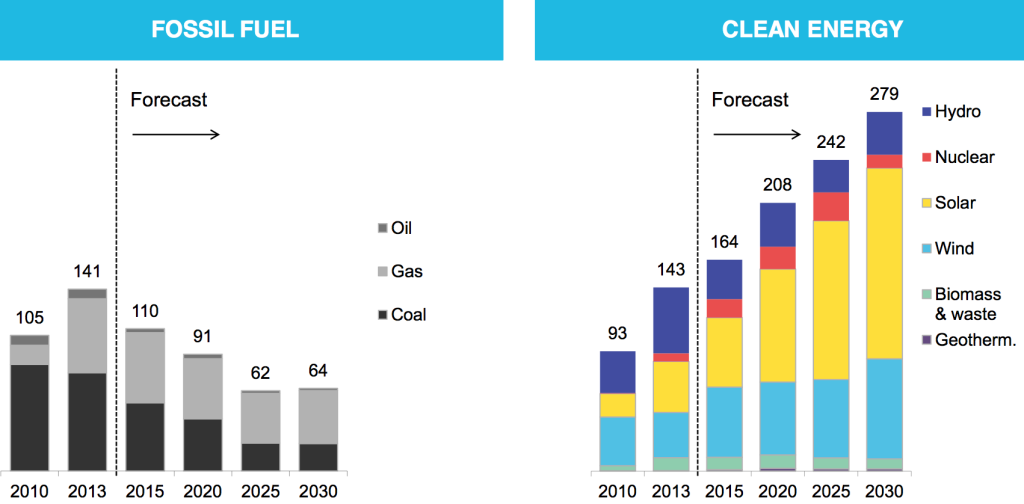
Cost Considerations
Initial Installation and Equipment Costs
The initial installation and equipment costs of solar panels can be relatively high. The cost of solar panels depends on factors such as the size of the system, the quality of the panels, and the complexity of the installation. However, the cost of solar panels has been decreasing over the years, making them more affordable and accessible to a wider range of consumers. It is important to consider the long-term savings and potential incentives or tax credits when evaluating the cost of solar panels.
Other renewable energy sources, such as wind, hydroelectric, biomass, geothermal, tidal, and wave energy, also have their own installation and equipment costs. These costs can vary depending on the scale of the system, the technology used, and the availability of resources. It is essential to consider the specific requirements and financial implications of each renewable energy source when comparing their costs with solar panels.
Maintenance and Operational Costs
Solar panels have relatively low maintenance and operational costs compared to other renewable energy sources. Once installed, solar panels require minimal maintenance, consisting mainly of periodic cleaning and inspections. Solar panels have no moving parts, reducing the risk of mechanical failures. This results in lower maintenance costs and fewer potential disruptions to the energy generation process.
Other renewable energy sources may require more frequent maintenance and operational costs. For example, wind turbines require regular inspections, lubrication, and repairs to ensure optimal performance. Hydroelectric power plants may require periodic dam maintenance and turbine maintenance. The specific maintenance and operational costs vary depending on the technology used and the scale of the system.
Comparative Costs with Other Renewable Sources
When comparing the costs of solar panels with other renewable energy sources, it is essential to consider the overall costs throughout the lifespan of the system. Solar panels tend to have higher upfront costs but lower maintenance and operational costs compared to wind, hydroelectric, biomass, geothermal, tidal, and wave energy systems. The cost-effectiveness of each renewable energy source depends on factors such as system size, location-specific conditions, available incentives, and the length of time the system will be in operation.
Environmental Impact
Carbon Footprint and Emissions
Solar panels have a minimal carbon footprint and emit no greenhouse gases during operation. The production of solar panels can result in some carbon emissions, primarily from the energy-intensive manufacturing process. However, these emissions are significantly lower compared to traditional fossil fuel-based energy sources. Solar energy can play a crucial role in reducing carbon emissions and mitigating the impacts of climate change.
Other renewable energy sources, such as wind, hydroelectric, biomass, geothermal, tidal, and wave energy, also have low or no direct greenhouse gas emissions during operation. However, the production and installation processes of these renewable energy systems may result in some carbon emissions. The overall environmental impact of each renewable energy source depends on factors such as resource extraction, manufacturing processes, and infrastructure development.
Land and Water Usage
Solar panels require relatively small amounts of land compared to other renewable energy sources. Rooftop solar installations do not require additional land, as they utilize existing available space. Large-scale solar farms, although they require more land, can be strategically located on underutilized or unproductive lands. This reduces the competition for land use between solar energy and agricultural or natural spaces.
Other renewable energy sources, such as wind, hydroelectric, biomass, and geothermal energy, may require larger land areas for installation and operation. Wind turbines and hydroelectric dams, in particular, can occupy significant land or water resources. It is crucial to consider the land and water usage implications of each renewable energy source when evaluating their environmental impact.
Ecological Impact
Solar panels have minimal ecological impact compared to other renewable energy sources. The installation and operation of solar panels do not have significant direct negative effects on ecosystems or wildlife. However, it is essential to consider the potential indirect ecological impacts associated with the production and disposal of solar panels. The extraction of raw materials and manufacturing processes can result in habitat destruction, water pollution, and waste generation. Proper waste management and recycling practices are necessary to mitigate these ecological impacts.
Other renewable energy sources, such as wind, hydroelectric, biomass, geothermal, tidal, and wave energy, may have varying ecological impacts. Wind turbines can pose risks to birds and bats, particularly if located along migratory paths or in sensitive habitats. Hydroelectric dams can disrupt river ecosystems and affect fish populations. The development of biomass energy systems may have implications on land use and biodiversity. It is important to consider these ecological impacts and implement appropriate mitigation measures when utilizing renewable energy sources.
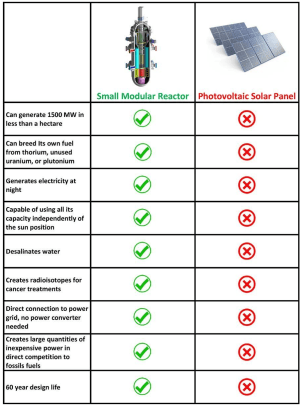
Reliability and Storage Capacity
Intermittency of Solar Power
Solar power is subject to intermittency due to variations in sunlight availability. Solar energy production is affected by factors such as weather conditions, seasonal changes, and time of day. This intermittency can introduce some challenges in maintaining a stable electricity supply solely from solar panels. However, when combined with energy storage systems or backup power sources, the intermittency of solar power can be mitigated.
Backup and Storage Solutions
Energy storage systems play a crucial role in addressing the intermittency of solar power and ensuring a consistent electricity supply. Battery storage systems allow excess electricity generated by solar panels to be stored for use during periods of low sunlight. This enables the utilization of solar energy during the night or during cloudy days. Additionally, backup power sources, such as diesel generators or grid connection, can provide supplementary power when solar energy production is insufficient.
Other renewable energy sources, such as wind, hydroelectric, biomass, geothermal, tidal, and wave energy, also face intermittency challenges. Wind energy production is influenced by wind speeds, which can vary over time. Hydroelectric power generation is dependent on water availability and river flow rates. Biomass energy relies on the availability of organic materials, which may not be consistent throughout the year. The selection and implementation of appropriate energy storage and backup solutions are critical for maintaining the reliability of renewable energy systems.
Comparison with Other Energy Sources
When comparing the reliability and storage capacity of solar panels with other energy sources, it is important to consider the specific characteristics and limitations of each source. Traditional fossil fuel-based power plants provide continuous electricity supply, regardless of weather conditions or resource availability. However, these non-renewable energy sources contribute to carbon emissions and are finite in nature.
Renewable energy sources, including solar panels, provide sustainable alternatives to non-renewable energy sources. While solar power is subject to intermittency, advancements in energy storage technologies are continually improving the reliability and stability of solar energy systems. When combined with backup power sources or energy storage systems, solar panels can provide a reliable and consistent electricity supply.
Government Policies and Incentives
Solar-Specific Incentives
Many governments around the world offer specific incentives and policies to promote the adoption of solar energy. These incentives can vary depending on the country or region and may include tax credits, grants, feed-in tariffs, or net metering programs. Tax credits and grants can help offset the initial installation costs of solar panels, making them more financially feasible for homeowners and businesses. Feed-in tariffs, on the other hand, provide financial incentives for selling excess electricity generated by solar panels back to the grid. Net metering programs allow solar panel owners to receive credits for the excess electricity they produce, which can be used to offset future electricity bills.
Comparison with Incentives for Other Renewables
Government incentives for other renewable energy sources, such as wind, hydroelectric, biomass, geothermal, tidal, and wave energy, also exist. These incentives aim to promote the development and utilization of various renewable energy sources, diversifying the energy mix and reducing dependence on fossil fuels. The specific incentives and policies may vary depending on the renewable energy source, the country, and the existing energy landscape.
While solar-specific incentives have been widely implemented, incentives for other renewable energy sources may be equally important. It is crucial for governments to design comprehensive and balanced policies that support the development of all renewable energy sources, taking into consideration their individual strengths and limitations.
Importance of Government Support
Government support plays a vital role in the widespread adoption and utilization of renewable energy, including solar panels. Policies and incentives can help overcome the barriers and challenges associated with renewable energy deployment, such as high upfront costs and regulatory hurdles. Government support provides stability, encourages investment, and creates an enabling environment for renewable energy technologies to thrive.
Additionally, government support for renewable energy aligns with global efforts to mitigate climate change and reduce greenhouse gas emissions. The transition to renewable energy is crucial in achieving sustainable development goals and ensuring a clean and secure energy future. By incentivizing the use of solar panels and other renewable energy sources, governments can contribute to a greener and more sustainable future.
In conclusion, solar panels offer numerous benefits as a renewable energy source. They provide a clean and sustainable alternative to traditional fossil fuel-based electricity generation, reducing carbon emissions and combating climate change. Solar panels have long-term cost advantages, offering potential savings over time. They also provide energy independence and the opportunity to sell excess electricity back to the grid. When comparing solar panels with other renewable energy sources, each source has its own advantages and limitations. Factors such as resource availability, environmental impact, efficiency, and energy production must be considered. Despite its intermittency, solar power can be made reliable through energy storage and backup solutions. Government policies and incentives play a crucial role in promoting the adoption of solar panels and other renewable energy sources. By providing support and creating an enabling environment, governments can contribute to a sustainable and resilient energy future.
